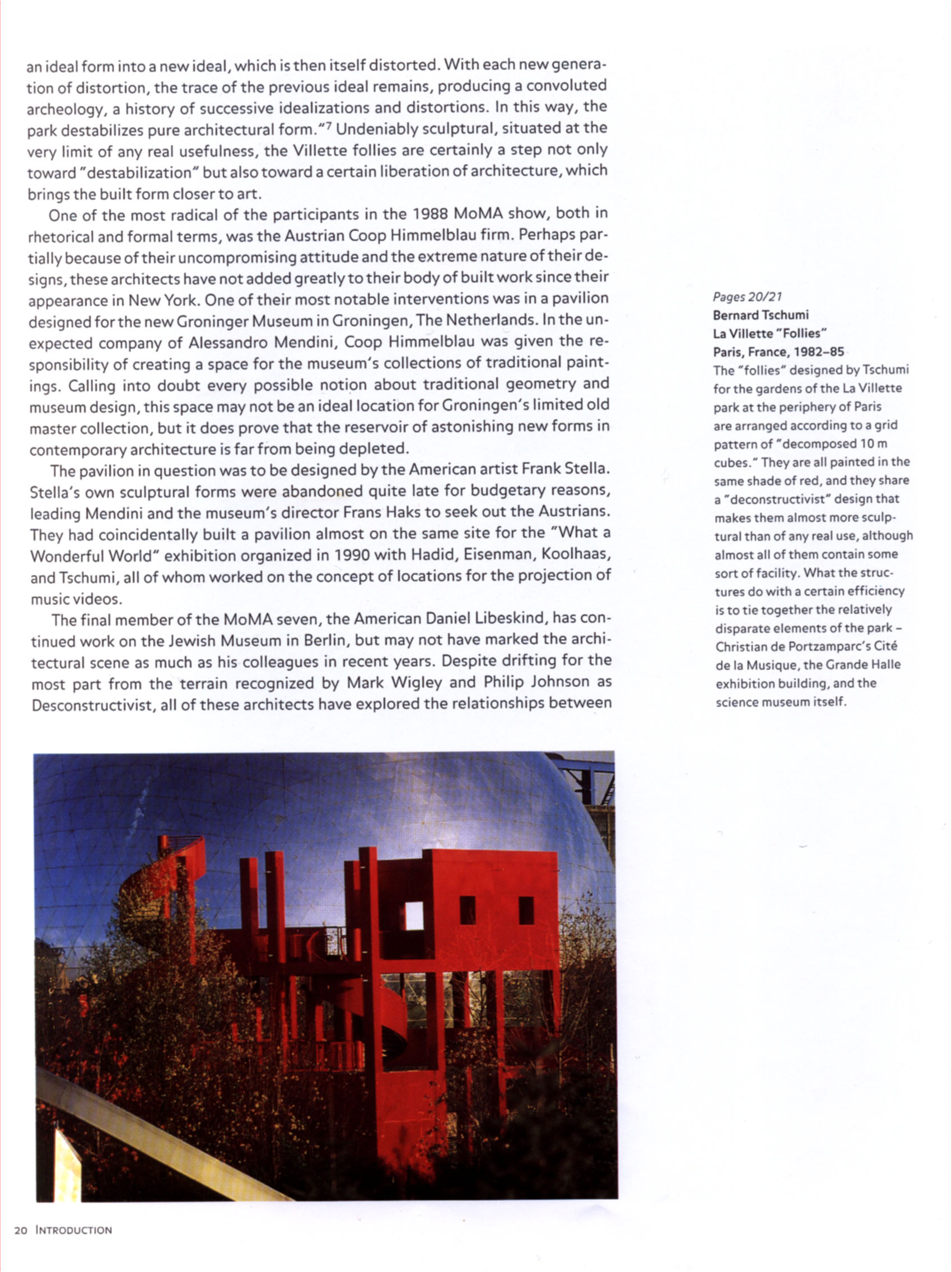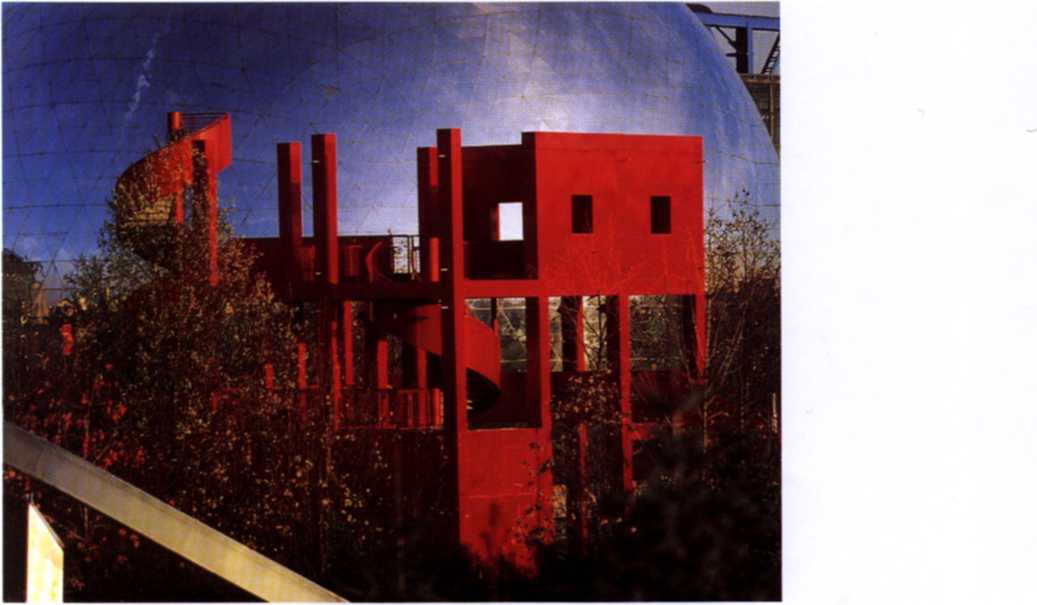New Forms Taschen 018

an ideał form into a new ideał, which is then itself distorted. With each new genera-tion of distortion, the tracę of the previous ideał remains, producing a convoluted archeology, a history of successive idealizations and distortions. In this way, the park destabilizes pure architectural form."7 Undeniably sculptural, situated at the very limit of any real usefulness, the Villette follies are certainly a step not only toward "destabilization" but also toward a certain liberation of architecture, which brings the built form closer to art.
One of the most radical of the participants in the 1988 MoMA show, both in rhetorical and formal terms, was the Austrian Coop Himmelblau firm. Perhaps par-tially because of their uncompromising attitude and the extreme naturę of their de-signs, these architects have not added greatly to their body of built work sińce their appearance in New York. One of their most notable interventions was in a pavilion designedforthe newGroninger Museum in Groningen,The Netherlands. In the un-expected company of Alessandro Mendini, Coop Himmelblau was given the re-sponsibility of creating a space for the museum's collections of traditional paint-ings. Calling into doubt every possible notion about traditional geometry and museum design, this space may not be an ideał location for Groningen's limited old master collection, but it does prove that the reservoir of astonishing new forms in contemporary architecture is far from being depleted.
The pavilion in question was to be designed by the American artist Frank Stella. Stella's own sculptural forms were abandoned quite late for budgetary reasons, leading Mendini and the museum's director Frans Haks to seek out the Austrians. They had coincidentally built a pavilion almost on the same site for the "What a Wonderful World" exhibition organized in 1990 with Hadid, Eisenman, Koolhaas, and Tschumi, all of whom worked on the concept of locations for the projection of musie videos.
The finał member of the MoMA seven, the American Daniel Libeskind, has con-tinued work on the Jewish Museum in Berlin, but may not have marked the architectural scene as much as his colleagues in recent years. Despite drifting for the most part from the terrain recognized by Mark Wigley and Philip Johnson as Desconstructivist, all of these architects have explored the relationships between
Pages20/21 Bernard Tschumi La Villette "Follies"
Paris, France, 1982-85
The "follies" designed by Tschumi for the gardens of the La Villette park at the periphery of Paris are arranged according to a grid pattem of "decomposed 10 m cubes." They are all painted in the same shade of red, and they share a "deconstructivist" design that makes them almost morę sculptural than of any real use, although almost all of them contain some sort of facility. What the struć-tures do with a certain efficiency is to tie together the relatively disparate elements of the park -Christian de Portzamparc's Cite de la Musique, the Grandę Halle exhibition building, and the science museum itself.

20 INTRODUCTION
Wyszukiwarka
Podobne podstrony:
7THE FIRST FLOOR Is approached by an exceptionally fine MASSIVE OAK STAIRCASE which is the feature i
46950 New Forms Taschen 215 BiographiesTadao Ando Boro mOukJ m 1941, Tadao Ando wat seif educated at
New Forms Taschen 002 The decade sińce the mid-1980s has seen an unparalleled surge in architectural
New Forms Taschen 061 Cesar Pełli Petronas Towers Kuala Lumpur, Malaysia. 1991-96 Wmner of an mvited
New Forms Taschen 144 architecture: "The installation represents the work site of an enormous b
New Forms Taschen 215 BiographiesTadao Ando Boro mOukJ m 1941, Tadao Ando wat seif educated at an ar
66854 New Forms Taschen 088 Toyo Ito Yatsushiro Municipal Museum Yatsushiro, Kumamoto, iapan. 1
45895 New Forms Taschen 019 art and new expressions of the built form. As in art, there may be no do
więcej podobnych podstron